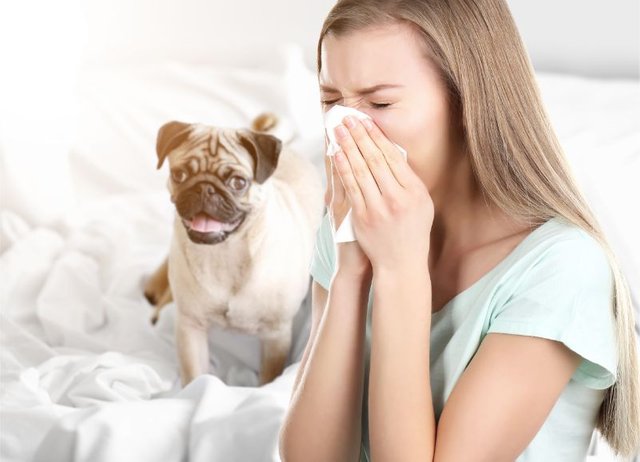How to Effectively Cope with Pet Allergies
Pet Owner Must-Knows- How to Effectively Cope with Cat & Dog Allergies
You are one of the most loving pet parents in your neighborhood, but then you are no stranger to itchy and watery eyes, a stuffy nose, wheezing, and rashes. You have tried to ignore these allergies, but it has come to a point when you feel you have no other option but to put your lovely cats, dogs, and ferrets up for adoption. Saying goodbye is hard.
Do not worry. You are among the 20 million pet owners who have allergic reactions in general. However, yours are as a result of coming into contact with your favorite pet. It may not be very convenient, especially when you consider your undying and unconditional love for your pets.
Lucky for you, you do not have to say that goodbye. These are a few simple yet practical tips, from using a cordless vacuum to a spring clean, that you can follow to help you reduce these symptoms. Following them carefully will enable you to continue enjoying life with your heavenly companions.

What Triggers Your Allergic Reactions?
An allergic reaction is your body’s dramatic way of rejecting an individual element —allergens. It can be as a result of certain types of foods, a season, or some environmental factor —including pets.
According to studies done by the AAFA, 15% of the world population is allergic to pets, and 30% of those with allergies due to other elements are also allergic to dogs and cats.
What triggers these responses is a secreted pet protein, allergen, released by dander and saliva. These allergens are usually sticky, and they cling to not only your pet’s fur but also clothing or bedding for long periods.
With that in mind, here are ten tips to help you control your cat allergies without having to kick your pets out to the curb.
#01. Take the Carpet Out
Remember allergens are sticky and they require a surface on which to attach. Carpets and other upholstery make it easy for them to stick on to and they are the hardest to clean. So opt for allergen-resistant fabrics like instead of the carpeted floors, choose hardwood or laminate flooring, and instead of drapes or curtains choose shutters or blinds.
If you cannot replace the carpet, ensure you get it professionally deep-cleaned at least twice a year.
#02. Clean, Purify and Clean a lot More
When you frequently use a HEPA vacuum cleaner, you prevent allergens from piling up, since the HEPA filter removes 99.97% of all tiny particles.
Moreover, a vacuum system traps allergens instead of redistributing them through the air.
#03. Frequently Bathe and Groom Your Cat
Do you remember how soft and pure your dog’s fur looked after you bathed him? You washed all the allergens away, and you got a cleaner and non-allergen friendly dog? You probably didn’t sneeze or itch for that one hour.
When you regularly bathe your dog and even cat you remove the dead skin flakes from their skin, thus reducing allergens by as much as 84%.
#04. Create Some Pet-Free Zones in Your Home
When you keep your dogs from accessing individual rooms in your house, you create a secure sanctuary for you and other allergy sufferers in the home.
So, ensure you always lock the doors and entirely forbid your cat from getting in no matter the circumstances.
#05. Effectively Clean Your Pet’s Bed
Your pet’s bedding is another primary source of piled-up allergens, so ensure that you wash it frequently. You may need to consider replacing pet beds every few months or so.
#06. Invest in HEPA Air Purifiers
A functional HEPA air purifier is the ultimate choice in allergen-control. The HEPA filters help you get rid of nearly 100% of the microscopic allergens that are keeping you miserable.
They not only assist you to remove cat dander but also other potentially hazardous indoor air pollutants.
#07. Go for Regular Allergy Tests and Immunotherapy
You might be wrongfully accusing your cat of causing your allergies. That is why you need some tests.
An allergy test will pinpoint the exact trigger, and thus your doctor can give you the advice on what to avoid and how to live better.
If you, however, opt for the immunotherapy route, (allergy shots), you will not only work towards reducing or eliminating your allergy to pets but also, your allergies to everything else.
Immunotherapy is expensive, but it can make a world of difference!
#08. Take Your Medication
Get your allergist to give you allergy medication that will help you get well. Over-the-counter drugs help, but they may end up making your condition worse.
Of course, decongestants and antihistamines are the first steps in medication. Usually, one can effectively manage their allergy symptoms with these treatments, but you may need to have your doctor suggest some anti-histamine/steroid combinations or full-or corticosteroids.
#09. Practice Proper Hygiene
Make sure that after petting your pets, you get to wash your hands. It is a cliché, but it helps you prevent these allergens from accessing your eyes, nose, and mouth.
#10. Train Your Pets
Pet urine is the number one trigger for your allergies. So, potty train your cat to avoid having those allergens stick around long after the pee dries up and spreads throughout your home.

There you have it. 10 tips to help you deal with pet allergies.
Congratulations @bypurify!
You raised your level and are now a Red Fish!
Do not miss the last post from @steemitboard:
Vote for @Steemitboard as a witness to get one more award and increased upvotes!